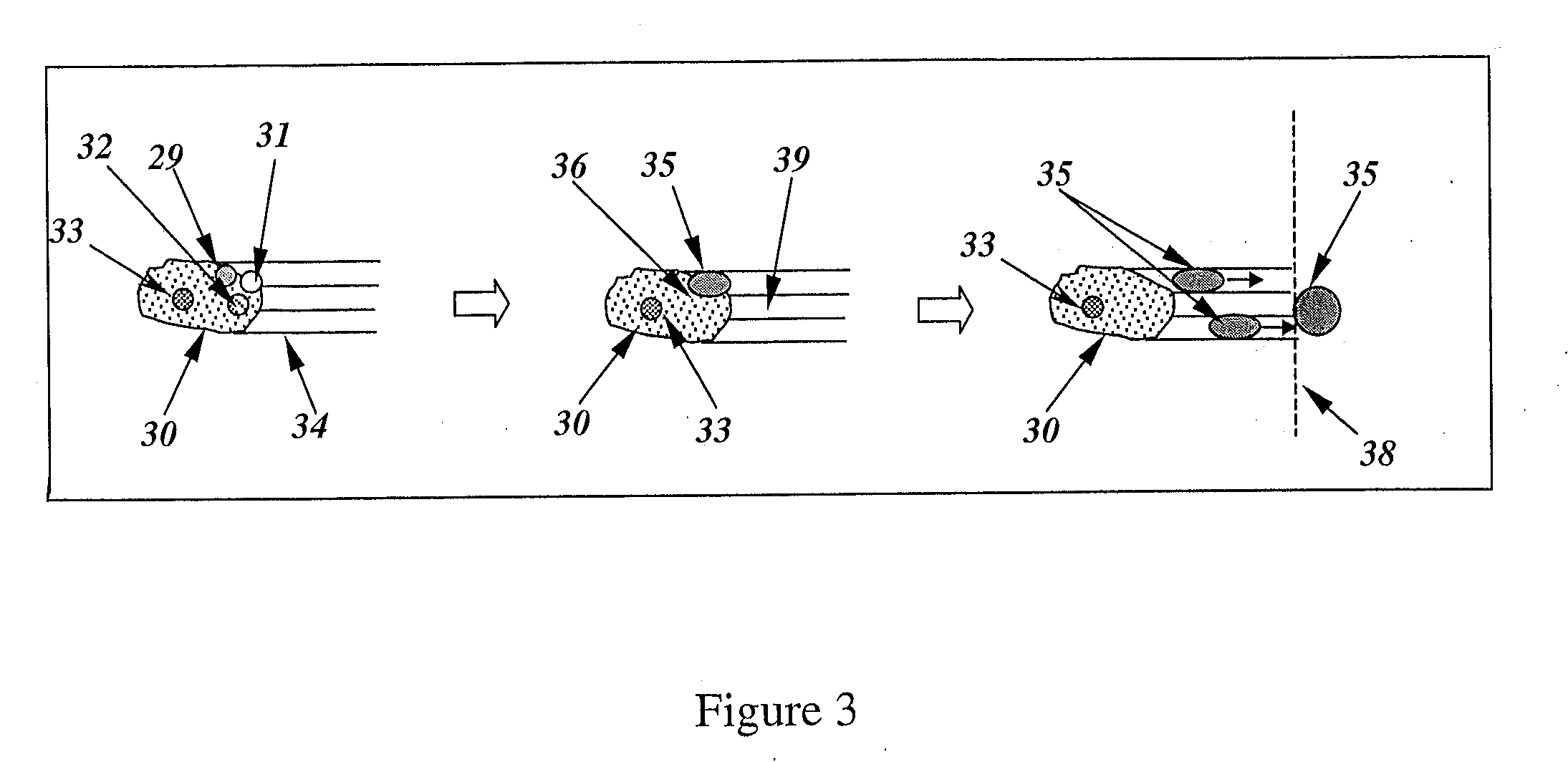Flue Gas Purification Process Using A Sorbent Polymer Composite Material
a composite material and flue gas technology, applied in the direction of other chemical processes, separation processes, dispersed particle separation, etc., can solve the problems of affecting the development of fetuses and young children, and affecting the health of people, so as to reduce the cost of removing pollutants
- Summary
- Abstract
- Description
- Claims
- Application Information
AI Technical Summary
Benefits of technology
Problems solved by technology
Method used
Image
Examples
example 1
FE Composite Tape
[0084] PTFE emulsion: an aqueous dispersion of polytetrafluoroethylene (PTFE) resin. For example, PTFE Dispersion 35 was supplied by Dupont Fluoroproducts. The PTFE particle size is from 0.05 to 0.5 μm; solid content of the PTFE emulsion is 35 wt %.
[0085] Activated carbon: fine powered activated carbon. For example, Nuchar RGC carbon powder, which is supplied by MeadWestvaco Corporation. The average carbon particle size is 40 μm. The total pore volume and total surface area are 1.1 cc / g and 1,600 M2 / g, respectively.
[0086] Activated carbon powder (from MeadWestvaco) was wetted with deionized water then mixed with PTFE emulsion (from Dupont) in a high-speed stirrer tank. The weight ratio of Carbon / PTFE is 70 / 30. Under intense stirring, the mixture was coagulated. Then, the coagulated mixture was separated from water and dried at 100° C. A lubricant (e.g., 50 / 50 water / isopropyl alcohol or mineral spirit or kerosene) is used to lubricate the dried mixture and to form ...
example 2
Sulfur Treated Carbon-PTFE Composite Tape
[0087] An activated carbon powder (Nuchar RGC carbon powder from MeadWestvaco) and elemental sulfur powder (from Aldrich, powder particle size <100 mesh, refined) were mixed at a weight ratio (Carbon / Sulfur) of 98 / 2 in a high-speed stirrer tank at dry condition. The mixture was then heated to 180° C. for 4 hours. After cooling, the carbon-sulfur powder mixture was used as the sorbent material in a CPC tape, which was produced as described in Example 1 (i.e., the carbon-sulfur powder mixture was substituted for the activated carbon powder in Example 1).
example 3
n Containing Chemical Treated Carbon-PTFE Composite Tape
[0088] An activated carbon powder (Nuchar RGC carbon powder from MeadWestvaco) was wetted with deionized water (about 50% by weight carbon and about 50% by weight water), and then put into a water solution that contains an iodide compound (IC), such as potassium iodide and / or sodium iodide to form a slurry mixture. The slurry mixture contained 10-50 wt % of solid and 90-50 wt % water. The IC content impregnated in the activated carbon was 0.2 wt %. The carbon / IC slurry mixture was mixed with PTFE emulsion (PTFE Dispersion 35 from Dupont) at a weight ratio (carbon / PTFE) of 70 / 30 in a high-speed stirrer tank. Then the mixture is made into CPC tape as described in Example 1.
[0089] The iodide compound can be water-soluble metal iodide salts, organic iodide compounds, and iodide coordination complexes, etc. Also a water-insoluble iodide compound can be impregnated using a reaction between two water-soluble compounds. As an example,...
PUM
| Property | Measurement | Unit |
|---|---|---|
| temperature | aaaaa | aaaaa |
| external surface area | aaaaa | aaaaa |
| adsorption temperature | aaaaa | aaaaa |
Abstract
Description
Claims
Application Information
 Login to View More
Login to View More - R&D
- Intellectual Property
- Life Sciences
- Materials
- Tech Scout
- Unparalleled Data Quality
- Higher Quality Content
- 60% Fewer Hallucinations
Browse by: Latest US Patents, China's latest patents, Technical Efficacy Thesaurus, Application Domain, Technology Topic, Popular Technical Reports.
© 2025 PatSnap. All rights reserved.Legal|Privacy policy|Modern Slavery Act Transparency Statement|Sitemap|About US| Contact US: help@patsnap.com



